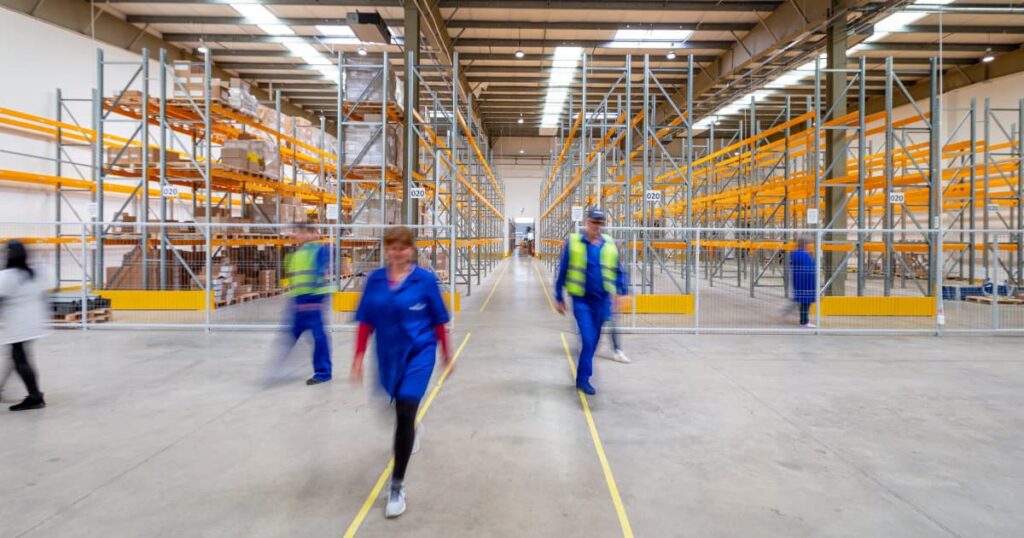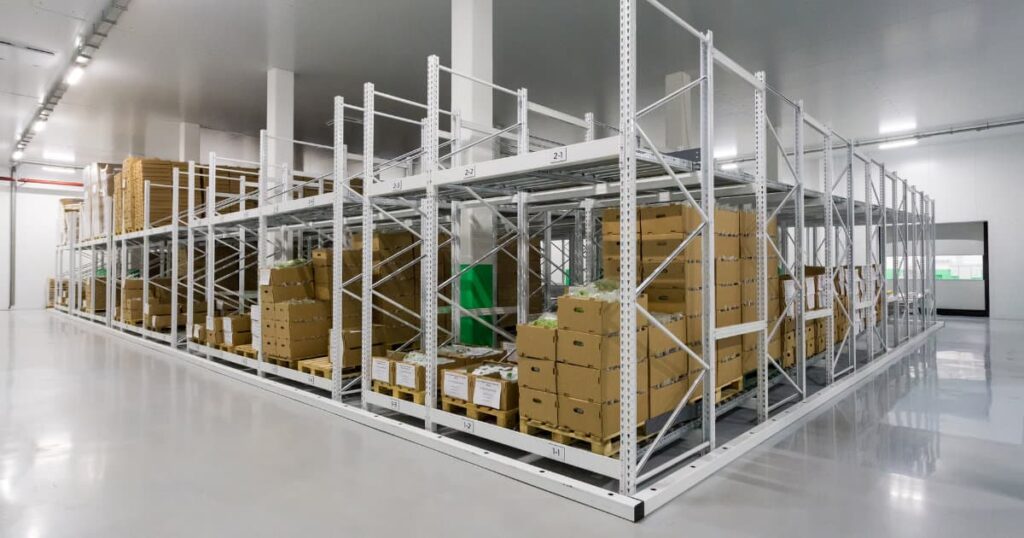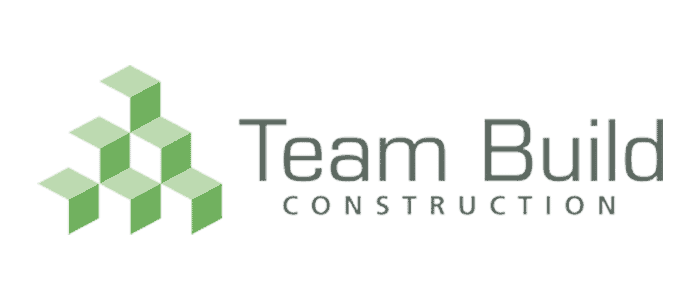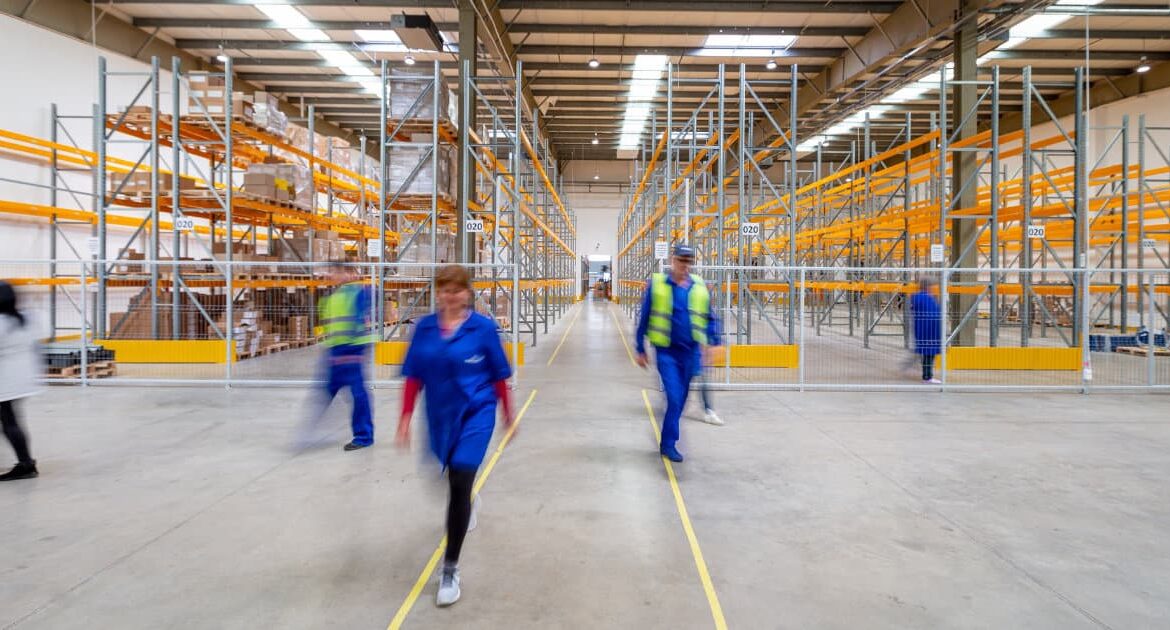
Every time you pick up your phone and order something from Amazon, or your favourite fashion retailer, or a supermarket, a warehouse kicks into gear and starts processing your order. With online retail at an all time high and only seeming to grow in popularity, warehouses are in high demand – and warehouse construction is booming.
In this article, we explore the process of constructing a warehouse, what makes warehouse design and build different from standard buildings, and the different types of warehouses that are being designed and built across the nation and beyond.
Warehouse construction basics
It will come as no surprise that constructing a warehouse relies largely on logistics, the way that certain items are stored and distributed, and the way that technology is used by the company or business to bring it all to life. Warehouses aren’t just about storing products – they are integral in maintaining the quality of that product and ensuring that it is distributed in a timely manner.
Just some of the main areas of focus when it comes to warehouse construction include:
- Cold storage – for example, storing food and pharmaceuticals on behalf of online pharmacies, supermarkets, and meal plan kits
- Sustainability for the manufacturer and distributor, using solar panels and finding greener ways of recycling and disposing of waste
- Whether a warehouse needs to be full enclosed or open to the elements, with different industries and clients bringing different needs to the drawing board
- The size of the company using the warehouse and their ability to expand quickly
- How high a warehouse can or needs to be, and how products at the bottom and bottom of these storage units will be accessed. That is, what other equipment needs to be able to access and move around the warehouse easily and without obstacle?
So, that’s just some of the things you need to consider when looking at the construction of a warehouse. But what are the differences between warehouses and other commercial construction projects?
Key differences between warehouse construction and other buildings
The biggest difference between the construction of a warehouse and that of any other building is the functionality of the space. Warehouses are typically large, open buildings which are designed to storage large quantities in certain conditions – for example cold storage. This means that warehouses are relatively simply in terms of design, but the demand is high for effective security and maximum storage efficiency in the space. This leads us neatly into another key difference…
Space. The difference between the space in a warehouse and a traditional building is monumental, with warehouses typically measuring over 1km in size. Not only does this tap into the size of the building itself but also the site it is located on, with many warehouses found in industrial locations and large unused urban sites. Remember, it’s not just enough to have a large empty space for your warehouse, it also needs to be accessible to enable the various other stages of logistical delivery.
And then we have materials. Warehouses are usually made from high quality durable materials such as steel and fibreglass – allowing natural light into the warehouses which are strong enough to withstand the large structures. As well as being able to hold up the huge walls and roof tiles, warehouse structures are also made from simple materials which are easy to replace.
Once inside the warehouse, again materials are very simple with functionality and versatility the most important things to consider in getting it right. As long as the warehouse can be accessed by the different touchpoints of the company’s logistics team and is large enough to store everything they need in the safest and most efficient way, then the building methods are often down to the construction company to finalise.
Warehouse structure and design

The design of a warehouse needs to tick three boxes:
- Large open space which can be used in the most efficient way
- Safe and easy access for all necessary vehicles and teams
- Efficient running systems which are sustainable
Most modern warehouse designs will look to solutions such as solar panels to reduce running costs, as sustainability is increasingly important to both consumers and to the companies that use these warehouses.
Outside the warehouse structure itself, accessibility remains a key area of focus as the surrounding roads and outdoor space needs to enable vehicles as big as lorries to carry, manoeuvre, park, and unload or load up its goods.
And finally, to the safety aspects of your warehouse design, which means thinking about things like fire safety and meeting points, risk assessments and potential hazards, safe access to high-up storage areas, and safe storage of products. All of this will need to be addressed in a planning application prior to the build process.
Types of warehouses
There are different ways of categorising warehouses, from considering the type of construction a company needs, to looking at the storage method and the function that a company requires from their warehouse space.
One of the easiest ways of understanding the different types of warehouse is to look at function. Under this category, warehouses include:
- Distribution or sorting warehouses, holding the products for companies before being shipped to the final end user or customer
- Industrial or production warehouses, storing components of products and unfinished goods. Essentially a parts warehouse
- Supply warehouses, storing raw materials which are then sent out for dispatch to manufacturers
From there, you can start to break warehouses down further by size, industry, and storage method.
How Team Build Construction can help
No matter what industry you are in, whether you need a small open roofed warehouse for some agricultural equipment or something expansive for a growing fashion or food brand, the guys at Team Build Construction are here to help. For more insight into how we can bring your ideal warehouse to life, get in touch today or visit the services page of our website.

